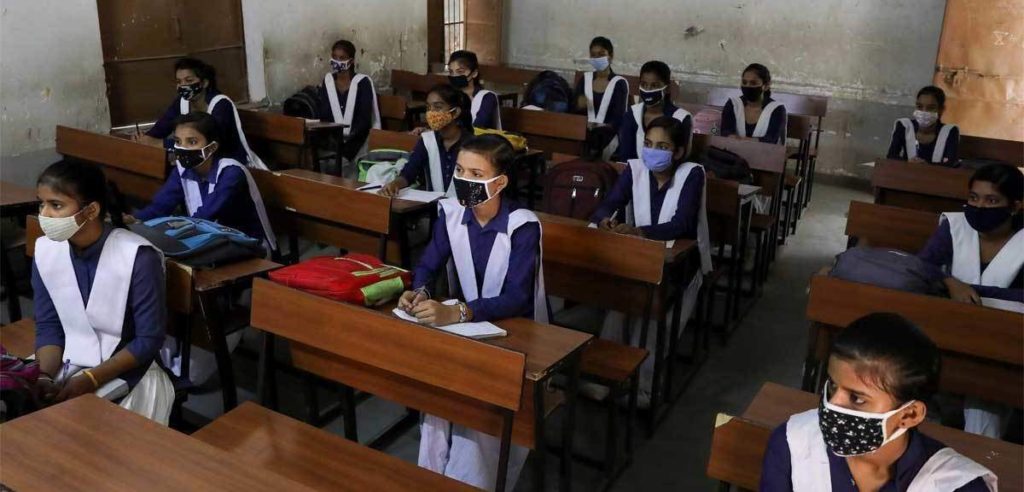‘No surprises’ seems to be the hashtag for this year’s budget, as echoed by the giants of Indian industry on TV channels, as they heave sighs of relief and project hope for an economic recovery. No surprises, because the government proceeded on a mostly business as usual plan, reiterating its commitment to privatisation – albeit more openly – focussing on incentives to corporates, including labour reforms, no COVID-19 cess and plenty of other platitudes amounting to little else.
But, this was the first budget after a pandemic that devastated millions of lives – mostly poor lives, but human lives, nonetheless. Dare they have expected some ‘surprises’? Surprises in the form of relief and recovery to mitigate their huge losses– a stimulus package maybe, targeted at them (every other country has one), a plan for re-opening and strengthening schools to make up for the learning gap and the trauma of the pandemic, recovery of small businesses or of unorganised labour that has found itself out in the cold for nearly a year, a plan to revitalise MSMEs?
Or is it that, from this government, that would be too much to expect, so yes “no surprises” here. It is business as usual – neglect of the poor, of those on the margins of education and livelihood, of women and girls, of farmers – of most of the citizens really. Does raise some serious questions of state legitimacy, I would imagine? Or would that be a surprise too?
I comment on education, and, in a piece last week, had highlighted some of the challenges facing the sector due to the pandemic and expressed hope that the government would care to address at least some of them. Instead, it has completely looked away, as though the education sector was bypassed by the pandemic. When in fact it was badly affected. Even the UN Secretary-General has warned of an “education catastrophe”, world-wide, despite many countries having prioritised education in their handling of the pandemic.
But in India, schools have been closed for a year now, millions have not had access to remote learning, schools have not even begun to prepare for the return of children, or the many that may not, teachers are in short supply and not trained to handle remote teaching or the diversity that they will encounter when schools do open. The psycho-social impact and the nutritional impact are yet to be determined but from all accounts are likely to be huge and long lasting.
But, the budgetary allocation for the coming year for Samagra Shiksha Abhyan (31,050 crores) – the government’s flagship programme for school education – is much lower than it was even last year (38,751 crores). The allocation for mid-dal meals is lower too (11,500 crores) than the revised estimates of last year (12900 crores) and the total National Education Mission allocation, that includes teacher education as well, is also down from 38860.50 crores to 31300.16 crores.
Further, there is no mention of making schools safe to return to, or training teachers to handle a post-pandemic crisis or bringing children back to school or addressing the nutritional crisis that may have been created. In fact, the finance minister had not a word for the vast numbers of students who have struggled to keep themselves going this past year. Not a word!
This year also saw the passage of a new National Education Policy (NEP) that called for a doubling of government expenditure over the next 10 years, starting from this year. But all the finance minister mentioned was “strengthening of 15,000 schools” in line with the NEP. That is only about 1% of the total schools in the country – are the others not part of the NEP? And which 15,000 schools will these be?
While not expressly mentioned yet, a closer look at the budget document shows an increase in allocation to Kendriya Vidyalayas (from 6437.68 crores in 2020-21 to 6800 crores this year) and Navodaya Vidyalayas (from 3480 crores to 3800 crores ) so these are likely being targeted for the improvement to new NEP standards. However, these schools already receive preferential treatment with much higher expenditure per student, a full complement of teachers and good infrastructure It is the lakhs of other schools that require the extra support. But, what is offered them is “handholding” by the favoured schools to help come up to standard. One is hard pressed to fathom the rationale here.
On the other hand, the finance minister has chosen to add 150 Sainik schools but these too with private and NGO support! But why are Sainik schools a priority in a pandemic year? It would appear then, that neither the rhetoric nor intention are even attempting to address the problems that exist. Instead, listening to the finance minister’s speech and reading the budget documents, one gets the feeling that what minimum government maximum governance – a slogan revived this year – really means is absent government and private governance.
Relief is to be provided by communities and NGOs, public assets are to be privatised, public sector banks to be disinvested, public services are to be privatised, private individuals are expected to provide support to teachers, even Sainik schools are to be opened with private sector and NGOs support! Clearly, the government has no plans to contribute to an Atmanirbhar Bharat! For who or what is this budget, then?
It is becoming increasingly tiresome to comment on the education budget year after year as it is but a tale of woe year after year. As the demand for education from all quarters has increased, the state’s commitment has correspondingly shrunk. Parents from the bottom quintiles are spending larger and larger proportions of household income on education, without a guarantee of quality as even private schools are unable to provide better quality uniformly and tens of millions are still out of school. Teachers struggle with multi-grade teaching and poor academic support, and millions of first-generation learners are still being denied their right to education.
An education catastrophe existed even before the pandemic, but it is clearly exacerbated now. To ignore it so comprehensively defies all logic. How long will this sector be ignored and at whose peril? Is it not amply clear that the fall-out from such deep and persistent neglect of education is bound to create serious social and economic problems with long lasting effects for all? That economic recovery and growth cannot be based on a population whose human development has so consistently been neglected? That the social backlash can be (and is) devastating for everyone?
That, the sector cannot be parcelled out to private and non-governmental largesse or philanthropy, which simply hasn’t the capacity to deal with the scale of the problem? That technology alone cannot save it? That serious physical, human and financial capacity gaps exist that require urgent addressing by the state? That none of this can be achieved by reducing financial allocations or not increasing them in line with requirements?
Yet every year the Ministry of Education’s allocation is whittled down to a fraction of its ask. This year too, while the Ministry of Education asked for 103,673.66 crores, it has received 93,224 crores. How then do we expect India to be atmanirbhar? The fact that, a blind eye continues to be turned to the obvious links between education and all aspects of atmanirbharta, has indeed failed to surprise now.
(Kiran Bhatty is a senior fellow at the Centre for Policy Research, New Delhi and a founder member of the Forum for Deliberation on Education. Article courtesy: The Wire.)




